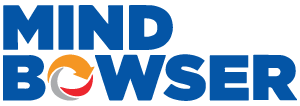Today, telehealth is mainstream, and prominent healthcare organizations, individuals, entrepreneurs, and institutions are addressing the use of telehealth platforms for catering to patients through telehealth. While telehealth had remained on the verge of disruption, COVID provided the necessary push to bring telehealth to everyone.
This has opened a new door of opportunity for healthcare entrepreneurs, and telehealth launches have seen a steep rise in 2020.
As launching and building telehealth platforms becomes more competitive, we share some tips and ideas that will help you plan to launch a telehealth platform.
In this blog, we will cover
⇨Telehealth business model
⇨Solving the marketplace dilemma
⇨Specific tips for growing a telehealth platform
Telehealth business models can be understood as a typical marketplace model where there are buyers and sellers, and the platform acts as a means to connect both. Amazon and Airbnb are great examples of marketplaces.
The best part about marketplaces is the network effect. This means more buyers lead to more sellers, leading to more buyers, and so on; the cycle continues. Once such a system sets in, it becomes hard to compete, and it creates a great advantage for a company.
Over time, as sellers build in reputation, profile, trust, and safety, and decrease friction, the value is multifolds. In fact, at that point, the platform can be set for automatic growth, and the community itself could become self-managed and keep the growth up. At this time, the business achieves growth through scalability, efficiency, and flexibility.
Launching a telehealth platform means bringing in practitioners and customers. The future of telehealth is about seamless connections between healthcare providers and patients, using advanced tech like AI and virtual consultations. Success depends on a user-friendly interface and meeting both sides’ needs, making telehealth a vital part of healthcare’s future.
The problem is that neither would like to join the platform before they see each other.
This is a typical marketplace growth problem.
So how to capture this initial growth, we will cover in this blog.
During the initial phase of a marketplace, neither supply nor demand are available. The problem is that one side cannot commit without the other. Hence, a marketplace entrepreneur has to find ways to manage the initial growth, either by growing one side first or by constraining the growth to a level where demand and supply ideally meet before taking it to the next level.
This is a snapshot from Lenny Rechitsky’s blog on Kick Starting and scaling marketplace.
In a snapshot, you can build a better foundation by following one of the strategies
1. Constraint growth – Primarily in offering or geography or both
2. Focus on one side first – Mostly successful companies have focussed on growing supply first.
Driving early supply: This is because supply could drive its own demand, or word-of-mouth can take care of demand.
Driving early demand: Here, you have to create value for your users. Find the product-market fit and convince the users to use the platform
In summary, the demand and supply problem is solved by focusing on constraining the market, i.e. either making your business geographically limited to a certain place or making it limited to a certain category of offerings. This gives businesses time to build their foundation and ensure growth opportunities.
Further, a marketplace owner should focus on convincing either side of the business before committing to the other, thus establishing one part of it. Studies have suggested controlling supply growth and then focusing on demand as a preferred method. Hence, after constraining your market, first focus on driving the supply in this way, ensuring to fulfill vast demand.
I consider telehealth to be a low-frequency marketplace where the user may use the platform once a month or less. This means a telehealth entrepreneur will have to double their efforts on retention, both on the supply and demand sides. Founders are required to focus on adding significant value to the telehealth platform beyond discovery and matching.
Low-frequency usage means a telehealth platform has to focus on competition and acquiring users with effective marketing. Here are some ideas for telehealth founders that can help them on their journey:
Think of unique features that would be useful for your audience. Find the aspects where the satisfaction score is still low with competitors.
Mark out those areas, whether it is the availability of practitioners or the quality of the video stream. Interview your potential users and find out the latent needs that you can fulfill.
You can also look into competing with the offline experience rather than with the online experience; integrating health data or providing proactive nudges for the user based on data can also gain a competitive edge.
Your platform should be easy to work with and should decrease the workload for practitioners. Think of integrations with platforms like EPIC as well as automation in different areas that eventually make time-saving one of the advantages of your platform.
This way, you can incentivize supply, which leads to demand. When a practitioner asks their patient to use a particular platform, they will oblige.
Similarly, for users, create space for keeping reminders, health documents, insurance, prescriptions, etc., that the user can use while still deciding whether to use the platform further or not.
Additionally, health device integration and concierge integration can make the user experience smoother and provide a full care continuum.
Related read: What Do Patients Really Want From Healthcare Mobile App?
For a telehealth platform, the supply side will have to grow first. Hence, work aggressively on onboarding practitioners quickly. Come up with ideas to keep practitioners engaged and motivated to remain on the platform. Have value additions such as other features they can use while they wait for patients to come.
These could again be features related to building their profile, transcription, appointment setting, reviews, etc.
Keep the platform released in a limited geographic area and seed the platform.
Another way to increase supply quickly would be to join hands and collaborate with such platforms that are serving doctors for some other reason but are not direct competitors.
Practo, a telehealth platform, created the Practo Pro app separately for doctors that would focus totally on doctors’ self-needs such as managing schedules, tracking feedback, online consultations, etc.
Innovation is one area in which you can create an edge. Going back to understanding the patient’s cycle, you should think about future trends and things that are still missing. Of course, it would not be so obvious, but a diligent effort to keep pushing the envelope can help.
Since, for a marketplace, you need reasons for supply and demand to stay on your platform while you work on making transactions happen, innovation can give you a long rope on the user experience.
You can think of blending new technology with old concepts, or vice versa.
Imagine combining fitness-based data to automatically prompt for scheduling visits or disrupting the postoperative course for the patient.
Another area could be using cloud computing and data to reinforce better care plans.
In fact, Mindbowser worked with a team of practitioners to build a platform based on thousands of data points, and artificial intelligence guides the intervention decision-making and recovery process.
You need to make your content available for the patients over a wide array of channels to ensure connectivity with them. As Telehealth crosses borders and reaches remote areas, have your video stream auto-adjust to different internet bandwidths as well as be available offline. This is something to be built into the architecture of the application using adaptive bitrate streaming. Content availability ensures reliability for the platform. Read more about building online-offline architecture here.
Selecting the right software architecture is important for any healthcare product. Watch this video on “How to select the right software architecture for your healthcare product?”
Like many other marketplaces that have their own products as well to fulfill the marketplace (Remember AmazonBasics), a telehealth entrepreneur can think of owning the supply by having their own practitioners using the platform. This will help you seed the platform with ample supply on day one. This is workable for medium-sized clinics and hospitals where the current model can be changed to an on-demand service.
If this is possible for you, then you can gradually build the network effect.
Another way to unlock supply would be to think of unconventional ways to find a supply. For telehealth, exploring an international pool of practitioners as well as going international for patients can be a great way to grow. Technology empowers us to go beyond geographical barriers. Telehealth can pave the way for international consultations, where, say, a patient in the UAE could be consulting with an expert in Houston.
Other areas of underutilized assets would be integration with caregivers, lab testing, and physician referral platforms.
Global conditions and pandemics force regulatory bodies to reform compliances and make them in line with present-day challenges. In fact, there were changes to HIPAA during COVID-19. Such disruptions open up opportunities for innovation. Keep an awareness regarding the changes in compliance and regulations. Sometimes such changes could help you pivot towards a more favorable business opportunity that was not available before.
Here is a video on complying with HIPAA Policies:
Get into non-conventional areas of Telehealth like nurse practitioners, veterinary care, ambulatory care, caregiver management, or have a hyper-focus on niche areas like teledentistry or telecosmetics, behavioral health, etc. Driving into a hyper-niche has been a growth model for many marketplaces. Going niche means you could have a chance to be a leader in that focused space and drive innovation and competitive advantage.
Going Niche can also be possible on the customer side, with a focus on particular ailments, people with special needs, smoking cessation, dermatology needs, etc.
Another important tool for telehealth platform growth would be building a community, which is the main aspect of the platform. Through the community, you give people a reason to keep using the platform even when they do not have a transactional need. Also, the community can help you build a loyal customer base as well as advocate for the brand. You can generate a lot of original content as well.
Apps like Mylo and Practo are good examples of community-driven growth
Mindbowser is a well-known healthcare technology provider that has led the industry by leveraging the power of healthcare software development and empowering many leading pharma and healthcare companies worldwide. Our experienced and highly competent team makes us the leading telemedicine app development company.
✅ Experience of working with top health labs and companies worldwide
✅ 15+ satisfied healthcare customers who rate us 10/10 for experience
✅ Personnel working on healthcare projects are trained on compliance and handling of data
✅ Healthcare domain experts with 20+ years of industry experience to lead the team
✅ Partnerships within healthcare ecosystem for solution accelerators & access to APIsb
✅ ROI driven development plans which assures value right from day one

These are some of the ways that a telehealth platform can drive growth. Telehealth platforms are at an exciting stage where technology, the ecosystem, and opportunity are meeting in resonance. By driving the right strategy, a telehealth entrepreneur can drive success.

We worked with Mindbowser on a design sprint, and their team did an awesome job. They really helped us shape the look and feel of our web app and gave us a clean, thoughtful design that our build team could...


The team at Mindbowser was highly professional, patient, and collaborative throughout our engagement. They struck the right balance between offering guidance and taking direction, which made the development process smooth. Although our project wasn’t related to healthcare, we clearly benefited...

Founder, Texas Ranch Security

Mindbowser played a crucial role in helping us bring everything together into a unified, cohesive product. Their commitment to industry-standard coding practices made an enormous difference, allowing developers to seamlessly transition in and out of the project without any confusion....

CEO, MarketsAI

I'm thrilled to be partnering with Mindbowser on our journey with TravelRite. The collaboration has been exceptional, and I’m truly grateful for the dedication and expertise the team has brought to the development process. Their commitment to our mission is...

Founder & CEO, TravelRite

The Mindbowser team's professionalism consistently impressed me. Their commitment to quality shone through in every aspect of the project. They truly went the extra mile, ensuring they understood our needs perfectly and were always willing to invest the time to...

CTO, New Day Therapeutics

I collaborated with Mindbowser for several years on a complex SaaS platform project. They took over a partially completed project and successfully transformed it into a fully functional and robust platform. Throughout the entire process, the quality of their work...

President, E.B. Carlson

Mindbowser and team are professional, talented and very responsive. They got us through a challenging situation with our IOT product successfully. They will be our go to dev team going forward.

Founder, Cascada

Amazing team to work with. Very responsive and very skilled in both front and backend engineering. Looking forward to our next project together.

Co-Founder, Emerge

The team is great to work with. Very professional, on task, and efficient.

Founder, PeriopMD

I can not express enough how pleased we are with the whole team. From the first call and meeting, they took our vision and ran with it. Communication was easy and everyone was flexible to our schedule. I’m excited to...

Founder, Seeke

We had very close go live timeline and Mindbowser team got us live a month before.

CEO, BuyNow WorldWide

If you want a team of great developers, I recommend them for the next project.

Founder, Teach Reach

Mindbowser built both iOS and Android apps for Mindworks, that have stood the test of time. 5 years later they still function quite beautifully. Their team always met their objectives and I'm very happy with the end result. Thank you!

Founder, Mindworks

Mindbowser has delivered a much better quality product than our previous tech vendors. Our product is stable and passed Well Architected Framework Review from AWS.

CEO, PurpleAnt

I am happy to share that we got USD 10k in cloud credits courtesy of our friends at Mindbowser. Thank you Pravin and Ayush, this means a lot to us.

CTO, Shortlist

Mindbowser is one of the reasons that our app is successful. These guys have been a great team.

Founder & CEO, MangoMirror

Kudos for all your hard work and diligence on the Telehealth platform project. You made it possible.

CEO, ThriveHealth

Mindbowser helped us build an awesome iOS app to bring balance to people’s lives.

CEO, SMILINGMIND

They were a very responsive team! Extremely easy to communicate and work with!

Founder & CEO, TotTech

We’ve had very little-to-no hiccups at all—it’s been a really pleasurable experience.

Co-Founder, TEAM8s

Mindbowser was very helpful with explaining the development process and started quickly on the project.

Executive Director of Product Development, Innovation Lab

The greatest benefit we got from Mindbowser is the expertise. Their team has developed apps in all different industries with all types of social proofs.

Co-Founder, Vesica

Mindbowser is professional, efficient and thorough.

Consultant, XPRIZE

Very committed, they create beautiful apps and are very benevolent. They have brilliant Ideas.

Founder, S.T.A.R.S of Wellness

Mindbowser was great; they listened to us a lot and helped us hone in on the actual idea of the app. They had put together fantastic wireframes for us.

Co-Founder, Flat Earth

Ayush was responsive and paired me with the best team member possible, to complete my complex vision and project. Could not be happier.

Founder, Child Life On Call

The team from Mindbowser stayed on task, asked the right questions, and completed the required tasks in a timely fashion! Strong work team!

CEO, SDOH2Health LLC

Mindbowser was easy to work with and hit the ground running, immediately feeling like part of our team.

CEO, Stealth Startup

Mindbowser was an excellent partner in developing my fitness app. They were patient, attentive, & understood my business needs. The end product exceeded my expectations. Thrilled to share it globally.

Owner, Phalanx

Mindbowser's expertise in tech, process & mobile development made them our choice for our app. The team was dedicated to the process & delivered high-quality features on time. They also gave valuable industry advice. Highly recommend them for app development...

Co-Founder, Fox&Fork
